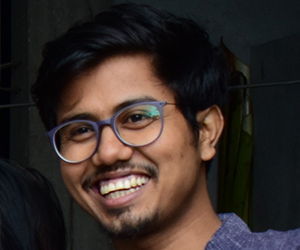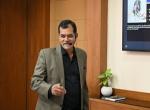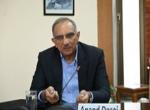On 13th August 2024, Vivekananda International Foundation (VIF) organized a Vimarsh discussing the book "Life, Death and the Ashtavakra Gita," co-authored by Dr Bibek Debroy and Hindol Sengupta. Dr Bibek Debroy is a renowned Indian economist and a scholar who has translated the Ramayana, Mahabharata, and the Puranas from Sanskrit into English. He is also the serving chairman of the Economic Advisory Council to the Prime Minister (EAC-PM), an independent body that advises the Government of India on economic and related issues. Hindol Sengupta is an acclaimed young historian, author, academic and journalist who has won many awards, including the Wilbur Award. His book ‘The Man Who Saved India’ won the prize for best work of non-fiction at the Valley of Words literary festival in India in 2019.
Dr Arvind Gupta, Director, VIF, in his opening remarks briefly talked about the Ashtavakra Gita, which is a classical Hindu text in the form of a dialogue between the sage Ashtavakra and Janaka, King of Mithila. It begins with a question from King Janaka to Ashtavakra in which he asks, "How does one acquire gyan, mukti and vairagya?” to which Ashtavakra applies, “If you desire mukti, cast aside material objects as they are poison; practice forgiveness, compassion, contentment and truth." Herein lies the core message of the Ashtavakra Gita. The important lesson from the Ashtavakra Gita is that remaining content in any circumstance or situation is very important. Dr Gupta quoted from the Ashtavakra Gita itself, "As a wise person is content everywhere, he survives on whatever comes to him. He roams around easily in different regions and sleeps, wherever the sun sets."
Dr Bibek Debroy talked about the fact that some people still don’t realise that there are many other Gitas apart from the Bhagavad Gita. There are more than 200 different types of Gitas in India. In fact, a Gita is anything that was sung and recited, which is why one needs to add the adjective Bhagavat to make it clear that this was the Gita that was narrated by Sri Krishna to Arjuna. There are 20 plus Gita's in the Mahabharata itself. Similarly, there are plenty of Gita's in the Puranas as well. There are also some standalone Gitas that are not part of the Puranas, the Valmiki Ramayana, or the Mahabharat, like the Ashtavakra Gita.
Dr Debroy talked about the rulers of Mithila (Videha), who were all called King Janaka. In fact, King Janaka mentioned in the Ashtavakra Gita is not Sita’s father. Sita's father was only one of the kings of Mithila, and he was originally named Sīradhvaja. There is no detail about King Janaka and Sage Ashtavakra in the Ashtavakra Gita. Ashtavakra is generally depicted with eight crooked limbs. But the beauty of the Sanskrit language is that Ashtavakra can be interpreted as a combination or samasa, crooked in eight of his parts. But Ashtavakra can also be interpreted as a Sandhi, which means someone who was upright in eight ways.
The Ashtavakra Gita is a very unusual Gita in comparison to the Bhagavad Gita. In the Bhagavad Gita, we look at Sri Krishna as the guru and Arjuna as the shishya, or student. Arjuna is asking Sri Krishna the questions, and Sri Krishna is answering those questions. In the case of the Ashtavakra Gita, it is exactly the opposite because if we think of Ashtavakra as the guru and Janaka as the shishya, then it is not Janaka who is asking Ashtavakra questions; it is Ashtavakra who is asking Janaka the questions. Across the 20 chapters of the Ashtavakra Gita, it increasingly becomes a dialogue between the two. The first chapter talks about giving up Ahamkara (arrogance). The Ashtavakra Gita says, ‘If you want Mukti, give up material objects. If you want Mukti, practice forgiveness, uprightness, compassion and truth. Dr Debroy highlighted one of the prominent teachings of the Ashtavakra Gita, which says that “If you take yourself to be free, you are free. If you take yourself to be bound by all these shackles, all this bondage of external possessions, external relationships, and the false world, then you will be bound. Your destination will be no different from your inclination.”
According to Hindol Sengupta, the Ashtavakra Gita does not give comforting storylines through which one can absorb the story and grasp the teachings. It directly tells the reader what they are doing wrong in their lives. Hindol Sengupta also highlighted the fact that ancient texts like the Ashtavakra Gita never described anybody as the ‘other’. These texts never divided the world into ‘us’ and ‘them’ because there was no ‘other’; they conceptualized a universal universe. Everything in this universe was part of the same whole. This book is an attempt to talk about how lessons from the Ashtavakra Gita are universal, and the authors are making a small dent, a small effort to raise awareness and perhaps reach out to new people.
S. Gurumurthy, Chairman, VIF, talked about the message of the Ashtavakra Gita. The Ashtavakra Gita is Advaita, which is beyond all kinds of worship and religion. The quintessence of Advaita, which is a philosophy that benefits all, was expounded by Adi Shankara, and it is stated in the Ashtavakra Gita. In fact, if the Hindu civilization today has a sense of unity, it is because of Adi Shankara, who united the entire philosophical extremes of India and the Indian civilization, into one identity. It was works like the Ashtavakra Gita that imbibed tolerance and acceptance of different beliefs in Indian civilisation. The Chairman also talked about the emergence of rigid ideologies based on religion, which tend to suppress dissenting opinions, fostering a sense of exclusivity. The Indian civilization is the only civilisation in which a new kind of approach flourished, which was, ‘I think I am right, but maybe you have a point too’ This emphasis on dialogue has enabled the Indian civilisation to persist peacefully for millennia, fostering an environment where ideas can flourish without resorting to violence. The session was then open for discussion, followed by closing remarks by Dr Arvind Gupta.











Post new comment